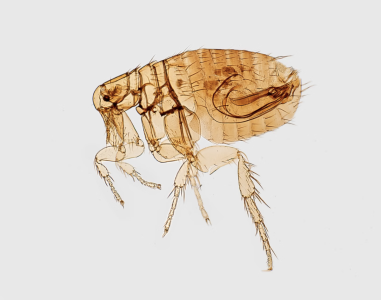Plague case reported in South Lake Tahoe sparks health advisory
- Replies 0
Health officials confirmed that a South Lake Tahoe resident has tested positive for plague after likely being bitten by an infected flea while camping.
The patient is now recovering at home and is expected to be okay, but the news has sparked concern among locals and visitors.
Some are shocked to hear the disease still exists, with one Lake Tahoe visitor saying, “I didn’t even know the plague was still something that was going on.”
Experts explain that the plague is caused by bacteria transmitted through flea bites, often from rodents such as squirrels and chipmunks.
“Bubonic plague is still around. It’s not very common—only about seven cases per year in the United States, mainly in the west—so California, Arizona, Colorado, New Mexico,” said Dr. Peter Chin-Hong of UCSF.
While the disease devastated millions in the Middle Ages, today it is rare thanks to improved sanitation and modern medicine. Still, it persists in small pockets of the world and occasionally appears in the US
Doctors stress that while the word “plague” may sound frightening, treatment is straightforward if started early.
Also read: Could this breakthrough vaccine change the future of this cancer's treatment?
“We have wonderful medicines applied antibiotics that work against bacteria and they work against the plague. They work very well if they’re applied early,” said Dr. Melanie Ott of UCSF.
Symptoms usually show up one to two weeks after a bite and can include fever, headache, muscle aches, and swollen lymph nodes.
More than 90% of patients survive when treated. Health officials recommend precautions for anyone spending time outdoors in the Sierra Nevada region.
That includes using insect repellent, avoiding contact with dead rodents, and keeping pets away from wildlife.
Also read: These everyday spices could help kill viruses and beat colds, experts claim
“Many of us love to go camping. We have dogs. We love to go out and hike. I think we should know that rodents in the area rarely but still do carry or are infected with the plague.”
“And fleas from these rodents can come and bite us and transmit this disease,” Ott explained. This is not the first time plague has appeared near South Lake Tahoe.
The last reported case in the area was five years ago, and two others were confirmed in 2015, both traced back to Yosemite National Park.
Officials say awareness—not panic—is key, and with proper care and precautions, the risks remain very low.
Read next: Are you at risk? Deadly “bone-breaking” virus spreading across US states—here’s what you should know now

Would you change your camping habits knowing plague cases still happen, or do you see it as just another rare risk of the outdoors? Share your thoughts in the comments and join the conversation to see how others feel about the balance between risk and adventure.
The patient is now recovering at home and is expected to be okay, but the news has sparked concern among locals and visitors.
Some are shocked to hear the disease still exists, with one Lake Tahoe visitor saying, “I didn’t even know the plague was still something that was going on.”
Experts explain that the plague is caused by bacteria transmitted through flea bites, often from rodents such as squirrels and chipmunks.
“Bubonic plague is still around. It’s not very common—only about seven cases per year in the United States, mainly in the west—so California, Arizona, Colorado, New Mexico,” said Dr. Peter Chin-Hong of UCSF.
While the disease devastated millions in the Middle Ages, today it is rare thanks to improved sanitation and modern medicine. Still, it persists in small pockets of the world and occasionally appears in the US
Doctors stress that while the word “plague” may sound frightening, treatment is straightforward if started early.
Also read: Could this breakthrough vaccine change the future of this cancer's treatment?
“We have wonderful medicines applied antibiotics that work against bacteria and they work against the plague. They work very well if they’re applied early,” said Dr. Melanie Ott of UCSF.
Symptoms usually show up one to two weeks after a bite and can include fever, headache, muscle aches, and swollen lymph nodes.
More than 90% of patients survive when treated. Health officials recommend precautions for anyone spending time outdoors in the Sierra Nevada region.
That includes using insect repellent, avoiding contact with dead rodents, and keeping pets away from wildlife.
Also read: These everyday spices could help kill viruses and beat colds, experts claim
“Many of us love to go camping. We have dogs. We love to go out and hike. I think we should know that rodents in the area rarely but still do carry or are infected with the plague.”
“And fleas from these rodents can come and bite us and transmit this disease,” Ott explained. This is not the first time plague has appeared near South Lake Tahoe.
The last reported case in the area was five years ago, and two others were confirmed in 2015, both traced back to Yosemite National Park.
Officials say awareness—not panic—is key, and with proper care and precautions, the risks remain very low.
Read next: Are you at risk? Deadly “bone-breaking” virus spreading across US states—here’s what you should know now
Key Takeaways
- Bubonic plague is still around. It’s not very common—only about seven cases per year in the United States.
- Symptoms usually show up one to two weeks after being bitten by an infected animal or flea.
- More than 90% survive. You can help prevent it by wearing insect repellent, staying away from dead rodents and having your pet stay away from dead rodents.
- Before this case, the last case of plague in the area was five years ago around South Lake Tahoe.







